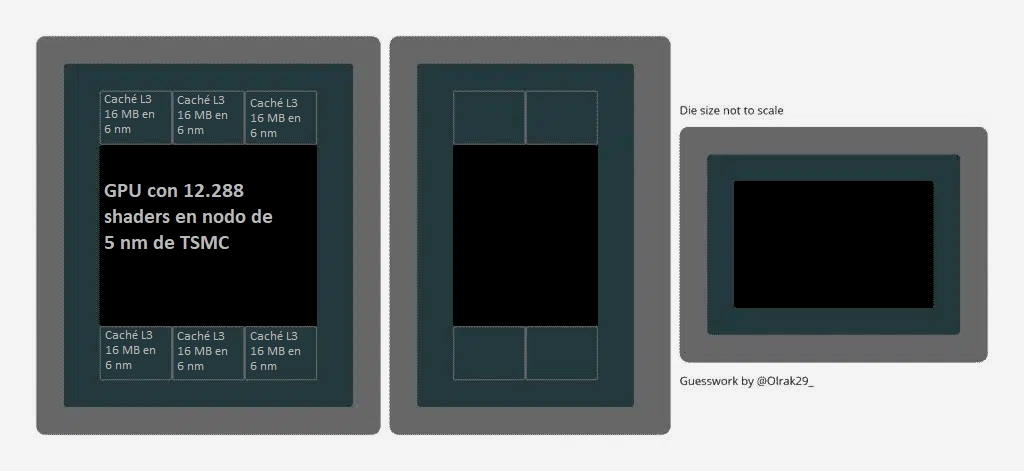The leak allowed us to see the possible specifications of the Radeon RX 7900 XT, a graphics card that is expected to become the most powerful of AMD’s new generation and which will arrive configured with a total of 6 smaller chips that will integrate L3 cachealso known as infinite cache, and a GPU that won’t end up being split into two interconnected chips.
I want to clarify what we just commented so that there is no doubt. When the Radeon RX 7900 XT and also the Radeon RX 7800 XT started being talked about, the possibility of AMD using the MCM design was considered identical to what we’ve already seen in the Instinct series, using two linked GPUs to create a “super GPU”, the same way two CCD units are combined in the Ryzen 5000 to create a 16-core chip.
In the end, this prediction did not come true, as all the key elements of GPU Navi 31, which will bring the Radeon RX 7900 XT to life, they will be integrated into a single chip. Only the L3 cache will be spread between these six smaller chiplets. I have indicated it in the attached picture so you can see it more clearly.
If we go back to the Radeon RX 7900 XT, this graphics card would be equipped with the Navi 31 core and manufactured in 5nm node. promises improvement 50% yield per watt vs. RDNA2 and a totally restructured computing unit, which means it will probably bring 128 shaders per compute unit (RDNA2 connects 64 shaders per compute unit). This move would be identical to what NVIDIA did with the GeForce RTX 30, a generation that doubled the number of shaders per SM unit.
Possible specifications of Radeon RX 7900 XT

- Graphics core Navi 31 with MCD (Multi-chiplet Die) design in 5nm node (L3 cache will come in 6nm).
- 12,288 shaders.
- GPU at 2.5 GHz and up to 3 GHz in turbo mode.
- 96 computing units. This reinforces the theory of the jump to 128 shaders per compute unit.
- 96 units for ray tracing acceleration if AMD sticks with the same design we saw in RDNA2.
- 384-bit bus.
- 24 GB of GDDR6 memory at 18 GHz, which would leave us with a total bandwidth of 864 GB/s.
- 96 MB infinite cache, 16 MB per chiplet.
- PCIe Gen5 interface.
We don’t have information about the texturing unit settings or the number of ROPs (raster units), but if AMD kept the distribution of 4 texture units per CU, the Radeon RX 7900 XT would have 384 texture units. The number of raster units should be higher than the 128 that the Radeon RX 6900 XT mounts, which I present to you as a reference, so that you have a more complete and accurate idea of \u200b\u200bwhat we can expect from the Radeon RX 7900. XT.
The Radeon RX 7900 XT should be maxed out 75 TFLOPs of performance in FP32, a number that would far exceed 23 TFLOPs from Radeon RX 6900 XT. This data also reinforces the information that practically takes for granted the duplication of shaders per compute unit. The launch of the Radeon RX 7900 XT should take place between September and October of this year.
